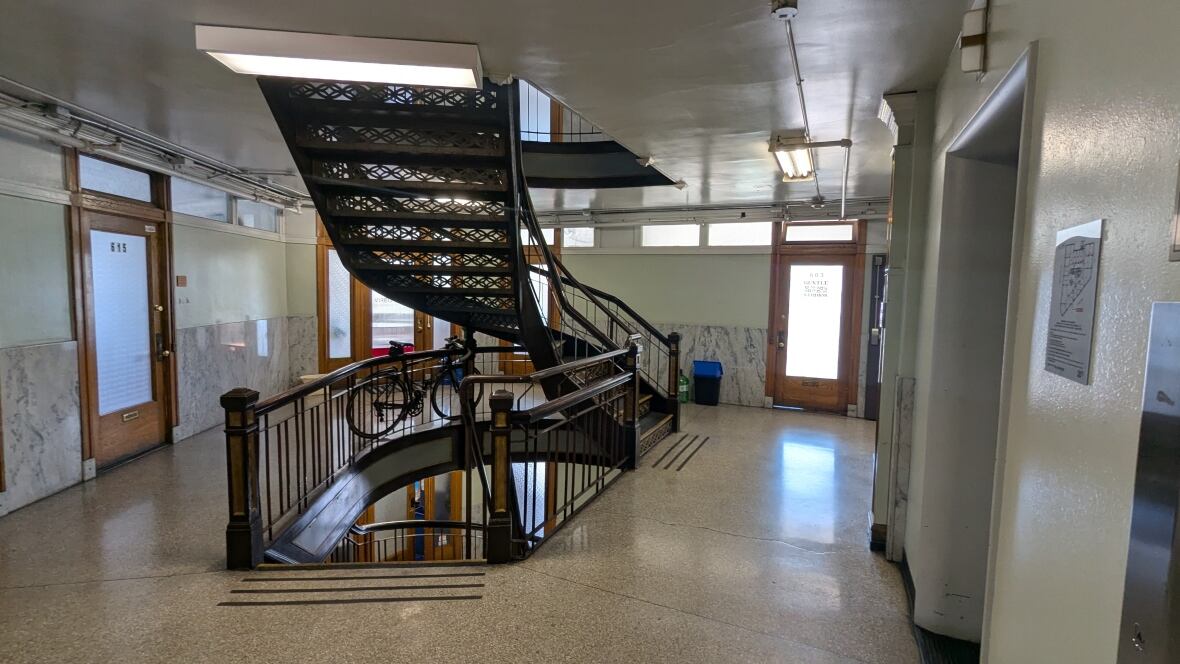B.C. fire chiefs worry about 1-stairwell building code changes
Buildings up to 6 storeys allowed to have 1 exit stairwell instead of 2 in effort to boost housing supply

The B.C. government has announced changes to the province's building code that will allow buildings up to six storeys to have one exit stairwell instead of two.
Housing Minister Ravi Kahlon said in a statement Thursday that updating the building code to remove the requirement for a second egress or exit stairwell per floor will facilitate more options for residents who need larger layouts.
A provincial statement said the change will make it possible to build housing projects on smaller lots and allow greater flexibility for multi-bedroom apartments, adding housing density in areas of transit-oriented developments.
But the province's fire chiefs say they're worried about safety and more time was needed for consultation.
"Whether this will help or not help affordability — I'm not an expert — but this process has definitely been rushed," said Surrey Fire Chief Larry Thomas. "A normal code process takes two or three years."
Proponents say the rule change will allow for medium-sized, multi-family buildings known among urbanists as "the missing middle" between large high-rise or multi-lot developments and single-family homes.
"The goal is basically to unlock a much better housing type of building so that we can have that in our toolkit as we look to densify our cities," says Bryn Davidson, co-owner and chief designer with Lanefab Design/Build.
Typically buildings have two exit or egress stairs connected by a hallway, which limits options for architects and creates smaller units.

"By contrast if you can have a single stair and wrap the units around it, then you can have daylight, you can have bigger three-bedroom units, you can have private balconies, cross ventilation, and you can build all this on much smaller lots," Davidson said.
But those looking after fire safety say there needs to be more discussion about the tradeoffs between building more housing and ensuring adequate safety.
"Tactically, we operate in ways that limit people's movement to egress the building," says Jason Cairney, second vice-president of the Fire Chiefs' Association of B.C. "And from the fire perspective, we're using up a significant portion of that stairwell and potentially even introducing smoke into that stairwell while we're combating fire."
The fire chiefs say the province hasn't gone far enough to address their safety concerns. They say the new code jeopardizes the public, building occupants, and first responders and that proper building exiting has saved thousands of lives.
A normal code adjustment, according to Thomas, takes two to three years through a national code development process that the B.C. adjustment bypassed.
I’m asking for this change in Vancouver to enable Single Egress Stair designs. Has long been on my radar to support larger, better quality, and family sized units and make low to mid-rise buildings more flexible. As we have a goal to harmonize the Vancouver Building Bylaw and the… <a href="https://t.co/Djz1l8LBg4">https://t.co/Djz1l8LBg4</a>
—@sarahkirby_yungProponents of the rule change say the tradeoffs are worth a slightly elevated level of risk, especially when drastic improvements in fire prevention over the last century are taken into account.
Davidson points to Seattle, Wash., where examples of the proposed type of development have existed for close to 20 years.
"A lot of these two-stair rules were written 100 years ago when building systems were very different," Davidson said. "But when you look at all of the other countries around the world, their life safety outcomes aren't worse than what we have with our two-stair system."
The building code changes take effect in most of B.C. except in Vancouver, which has its own building code. At least one Vancouver city councillor has proposed updating the city's building bylaw to align with the province.
"I've been following the single-egress stairs issue for some time and talking with a number of local architects who have expressed frustration that it has really limited their ability to design really utilized floor space and design larger living units for families," said Coun. Sarah Kirby-Yung.
Although Vancouver's building code has not yet been changed, there are examples of single-staircase buildings in the city.
"We've got the Dominion Building, Sun Tower, the Lee Building at Main and Broadway, a lot of these old classic, turn-of-the-century buildings that people love," Davidson said. "They were built with these really nice single central stairs. The taller ones have the fire escapes on the outside."
Kirby-Yung says she plans to bring a motion to city council to align the city's building code with the province on this issue when council returns in the third week of September.
With files from The Canadian Press


